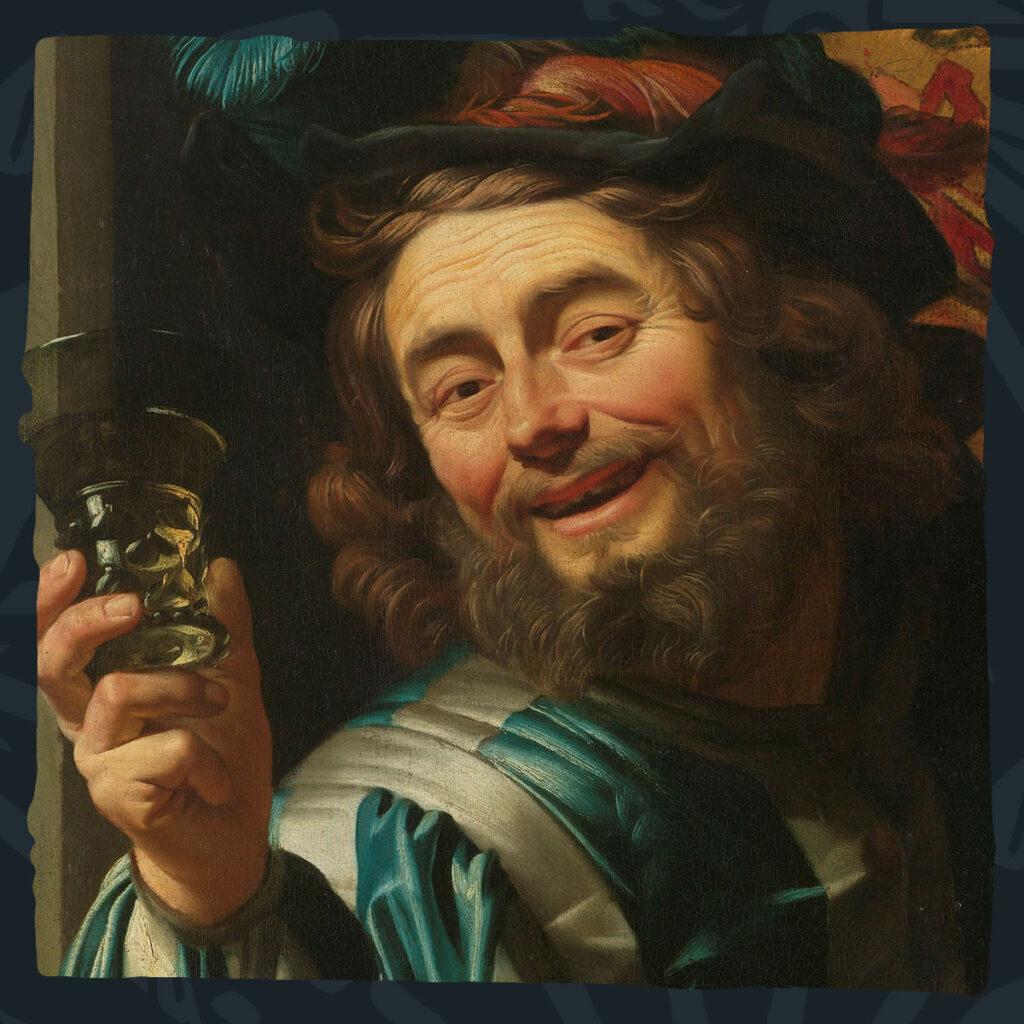
1606 Roemer with the Arms and Motto of Prince Maurits van Oranje
Roemers, a unique form of glassware, gained popularity in the Netherlands and the Rhineland during the sixteenth and seventeenth centuries. The term “Roemer” is derived from the German word “Römer,” reflecting its inspiration from ancient Roman prototypes. Characterized by a bulbous bowl, short stem, and glass blobs known as “prunts,” Roemers became coveted items during the Renaissance.
– – – – –
🙏Follow Rebels or Beggars for more history, art, & gaming from the Renaissance Netherlands & Europe’s long, late 16th century: 1549-1619.
☙ facebook.com/rebelsorbeggars
☙ instagram.com/rebelsorbeggars
☙ rebelsorbeggars.com
– – – – –
Wine has been cultivated in the Rhineland since the settling of the Romans. By late Medieval Period onto the Renaissance, much of Rhinish wine was transported down the river to the Low Countries, where it was consumed in great quantities.

Nobles and the rising merchant class, seeking luxurious objects, embraced Roemers for both their aesthetic appeal and functional design.

The bulbous bowl facilitated wine aeration, while the short stem and prunted foot provided stability. Notably, prunts, small applied glass blobs, adorned the bowl, serving a dual purpose of decoration and practical grip.
This particular example is likely to have belonged to Maurits van Oranje (1567-1625), famous son of William the Silent and Dutch political and military leader, himself.

The glass is engraved with the year 1606 along with his heraldic arms and family motto: “Je maintiendray Nassau”

Pointedly, the glass is also etched with two stems growing from a fallen tree, representing the lives of Maurits and his younger brother Frederik Hendrik (1484-1647), both of whom survived their father’s assasination and yet continued the fight for Dutch independence from Habsburg Spain.
Accompanying the stems is a motto befitting Maurits and his brother on a personal level: “‘Tandem fit surculus arbor” (At last a tree grows from a twig).

From the collection of the Rijksmuseum:
http://hdl.handle.net/10934/RM0001.COLLECT.325453
– – – – –
👕 Want to support the work I do with Rebels or Beggars? Buy a history-celebrating shirt, mug, or sticker! Get your Renaissance + early modern history swag here:
http://rebelsorbeggars.redbubble.com
